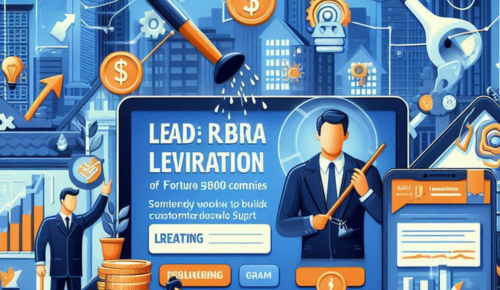
Getting new customers is hard. But with the right lead generation tools, you can find people who want to buy from you. Today’s market needs smart approaches to finding and keeping customers. Let’s look at what works for big companies and how you can use these same methods to grow your business.
Effective Methods for Customer Acquisition
When you want to get more customers, you need a system that helps you find them. Top companies invest in lead conversion platforms that make this process easier. Take the case of Midwest Electronics; they switched from manual customer searching to automated systems and saw their potential customer list grow by 300% in just six months.
Many companies use platforms like LinkedIn Sales Navigator to spot possible buyers. They also use systems like ZoomInfo to get contact details. For example, Sarah’s small clothing business saw leads increase by 40% in just two months after using the right software. These systems do more than just find names; they tell you what your possible customers like and how they behave online.
A local consulting firm found that by tracking website behavior, they could predict which visitors were most likely to become customers. They noticed people who downloaded their free guides were 5 times more likely to buy services later.
Getting Better Customer Information
Your website forms can make a big difference in finding new customers. The trick is knowing what to ask and when to ask it. Smart companies use lead generation tools to test different ways to collect information. Here’s what works:
First Contact Forms:
- Ask for just name and email
- Offer something valuable in return
- Make the process take less than 30 seconds
Follow-up Forms:
- Request more detailed information
- Ask about specific needs
- Include budget questions
When a software company made their forms shorter for first-time visitors but asked more questions from people who came back, their lead quality went up by 25%. They also found that offering a free tool demo increased from completion rates by 60%.
Smart Timing for Customer Contact
Modern lead generation software helps you know exactly when someone is interested. For example, a furniture store uses chat systems that start a conversation when someone looks at the same couch three times. This smart timing helped them get 50% more sales talks.
A real estate agency used this approach to time their follow-ups:
- First visit: Send welcome email
- Second visit within 48 hours: Offer property alerts
- Third visit: Show similar listings
- Multiple page views: Direct agent contact
Making Emails Count
Email still brings in lots of customers when done right. Big companies use special lead magnet platforms to send the right message at the right time. One retail store saw their email opens go up from 15% to 35% when they started using smarter systems.
Their success came from:
- Sending emails based on customer actions
- Testing different subject lines
- Using customer purchase history
- Timing emails for peak engagement hours
A pet supply company tried this method. They sent different emails to:
- New pet owners (basic care guides)
- Long-time customers (premium product offers)
- Seasonal buyers (holiday specials) Their sales increased by 45% in three months.
Building a System That Works
Good tools help you know which potential customers to focus on first. A tech company found they could close deals 40% faster by using these systems well. They created a point system:
- Website visits (1 point each)
- Downloaded content (5 points)
- Price page views (10 points)
- Demo requests (25 points)
Leads with more than 50 points got immediate sales team attention. This helped them focus on the most promising opportunities first.
Connecting Your Systems
When your tools work together, everything runs better. A marketing agency saw their sales go up by 30% in three months after connecting all their systems. They used platforms that could:
- Track all past conversations
- See what customers bought before
- Know which emails worked best
- Watch website behavior
One manufacturing company connected them:
- Website analytics
- Email marketing platform
- Customer service system
- Sales database
This gave them a complete view of each customer’s journey. Sales teams could see exactly what information potential customers had already received.
Moving Forward With Success
You don’t need every system right away. A small business owner started with just basic systems and added more as they grew. After one year, they were getting five times more customers than when they started.
Their growth path looked like this:
- Month 1: Basic contact forms
- Month 3: Email Automation
- Month 6: Customer tracking
- Month 9: Advanced scoring
- Month 12: Full system integration
Conclusion
Using the right lead generation tools makes finding new customers much easier. But remember, tools help good strategy work better. They don’t replace it. Start small, learn what works, and build from there. Ready to find the perfect tools for your business? Visit Ad Hub Audience now for a free guide on choosing the right options for your needs.
Frequently Asked Questions
Q 1. What makes good lead generation tools worth the investment?
Answer: The best systems fit your business size, work with your current setup, and show clear results in customer growth.
Q 2. How quickly can I expect results from new systems?
Answer: Most businesses see initial improvements within 30-60 days of proper implementation.
Q 3. What’s the most important feature to look for?
Answer: Integration capabilities with your existing tools and ease of use for your team.
Q 4. How much should small businesses spend on these tools?
Answer: Start with 5-10% of your marketing budget, increasing as you see positive returns.
Q 5. Can these systems work for any industry?
Answer: Yes, but they need proper customization for your specific market and customer type.
